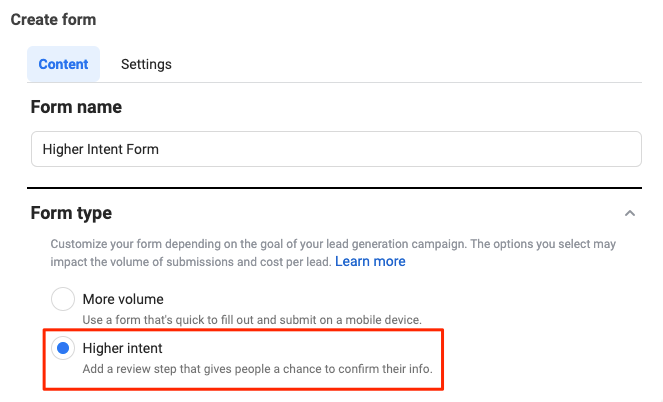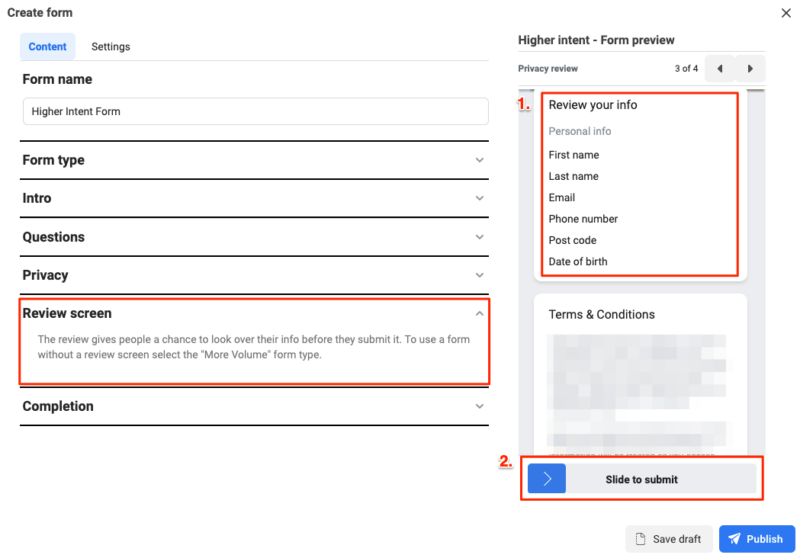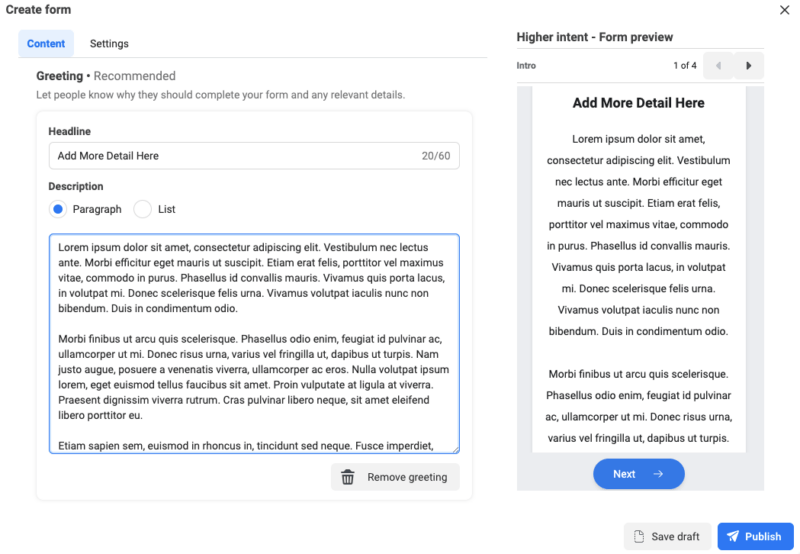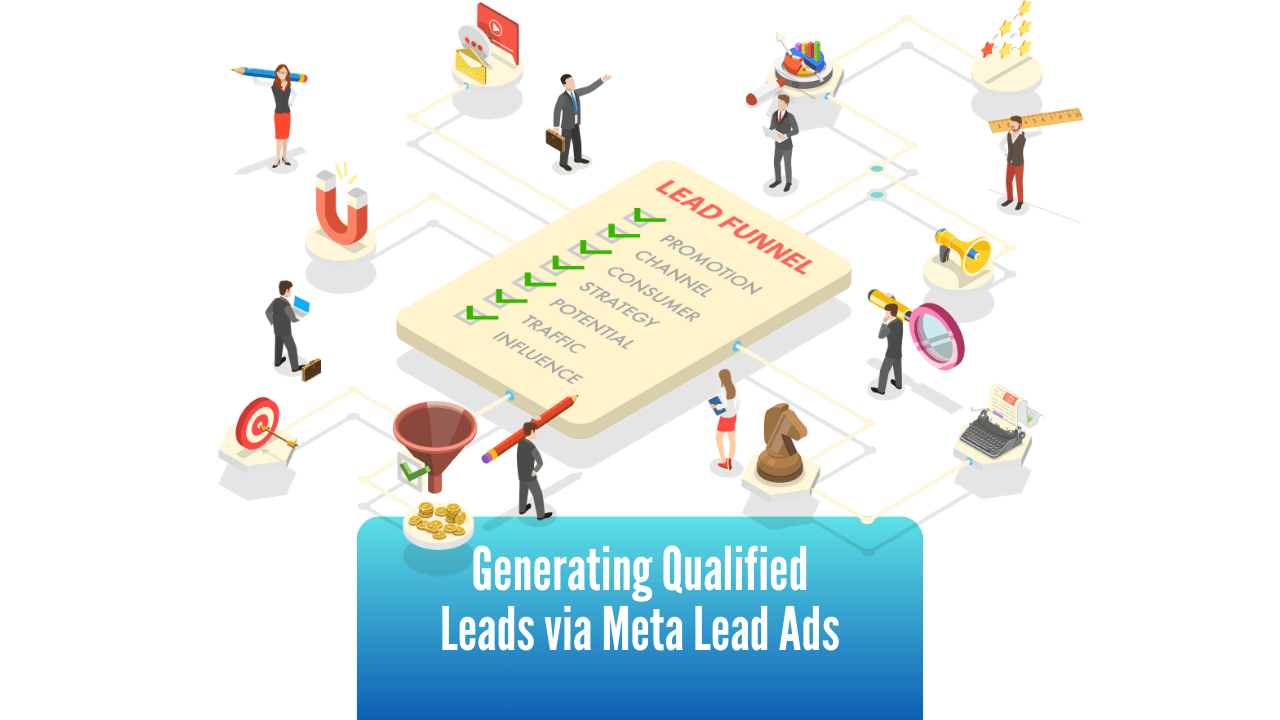The #1 complaint I hear about Facebook and Instagram lead ads goes something like this:
“The lead quality is poor; every lead I call either doesn’t answer or doesn’t want to proceed to the next stage”. Sound familiar?
To capture your audience’s attention and generate leads, it’s crucial to create engaging and eye-catching advertisements. Using specific colors, compelling descriptions, and anticipation-building strategies can significantly improve the effectiveness of your ads.
However, if you’re doing all this and you’re not generating qualified leads, then you’re wasting your time and money… and none of us wants that!
Facebook lead ads can play a valuable role in generating high-quality leads, you just need to know a few ticks to ensure the leads you’re generating are of high quality.
If lead quality is an issue, here are some strategies you can try.
1. Use the Higher Intent Lead Form Setting

When creating your form, select the Higher Intent form type. This does 2 things:
Adds an extra confirmation screen to the lead form; almost like a double opt-it.
The submit button becomes a swipe button. This adds an additional layer of intent to the submission – it’s not often you swipe to submit a form.

2. Add More Detail to your Lead Form Introduction Screen
With the Paragraph option selected, there’s no apparent limit to the number of characters you can add to the intro Page. This means you can provide more detail about the products or services you offer. Unfortunately (as of the time of writing) you can’t format this page or add images.

3. Ask for information that doesn’t get pre-filled in the
If you’ve only been asking for details like first name, email and phone, that get automatically pre-filled in the lead form, then ask for something the user needs to manually add or select from a dropdown. This might be a short custom questions like “when are you thinking of [selling your home]”, or it may be one of the other fields that people don’t always use such as Zip/Postcode.
Here’s an example of a lead form we used with a drop-down question:

4. Follow-Up Leads Faster
Following up leads with a phone call within 1 hour of the lead being submitted can significantly improve sales conversion rates. According to a study by Harvard Business review, leads are seven times more likely to convert if you contact them within an hour of submitting a lead form.
“Firms that tried to contact potential customers within an hour of receiving a query were nearly seven times as likely to qualify the lead (which we defined as having a meaningful conversation with a key decision maker) as those that tried to contact the customer even an hour later—and more than 60 times as likely as companies that waited 24 hours or longer.”
This means that contacting a lead in the first 1 hour can result in a 700% increase in conversion. Being this quick to respond to a leads may seem impossible, but if you’re a small business, you might try using SMS lead ad notifications or an email autoresponder.
5. Follow Up Leads in Multiple Channels
If you’ve tried to call a lead a couple of times and haven’t had an answer, then follow up with an SMS and Email. You could also try finding them on LinkedIn and sending them a direct message there, particularly if you’re running a B2B lead generation campaign.
6. Target High Net Worth People
You can use Meta Ads Demographic, Behaviour and Interest targeting to show your lead ads to people who tend to have more disposable income. We’ve written a whole post about it: How to target rich audiences via Facebook & Instagram Ads.
Bottom Line
Qualifying leads effectively is crucial for maximizing the ROI of your Facebook Lead Ads. By incorporating pre-qualification questions, leveraging custom audiences, and integrating lead data with your CRM via tools such as LeadSync, you can ensure that the leads you capture are more likely to convert into valuable customers. The strategies outlined in this guide will help you refine your approach, reduce time spent on unqualified leads, and ultimately drive better business results. Keep testing and optimizing your lead qualification process to stay ahead in the competitive landscape and ensure your marketing efforts are as efficient and effective as possible.
Frequently Asked Questions
Why is lead qualification important for Facebook Lead Ads?
Lead qualification helps ensure that the leads you capture are more likely to convert into paying customers. This process saves time and resources by focusing your sales efforts on leads with higher potential.
What are some effective pre-qualification questions to ask in Facebook Lead Ads?
Effective pre-qualification questions might include inquiries about the prospect’s budget, timeline, specific needs, or decision-making authority. Tailor these questions to your business and the product or service you are offering.
How can I use custom audiences to improve lead qualification?
Custom audiences allow you to target ads to people who have already shown interest in your business. By creating audiences based on past interactions, you can focus your efforts on individuals more likely to be qualified leads.
What CRM integrations are available for Facebook Lead Ads?
Some CRM platforms offer native integrations with Facebook Lead Ads. You can also use LeadSync to integrate with most popular CRM platforms. These integrations can automatically import lead data into your CRM, making it easier to track and manage leads.
How often should I review and update my lead qualification process?
It’s a good practice to review and update your lead qualification process regularly, at least every few months. This helps you stay aligned with changes in your market, customer preferences, and business goals.
Can I automate the lead qualification process?
Yes, automation tools can streamline the lead qualification process. Using CRM integrations, automated email responses, and AI chatbots can help qualify leads quickly and efficiently without manual intervention.
What metrics should I track to evaluate the effectiveness of my lead qualification process?
Key metrics to track include conversion rates, cost per lead, lead response time, and the percentage of qualified leads. Monitoring these metrics can help you identify areas for improvement and optimize your lead qualification strategy.

